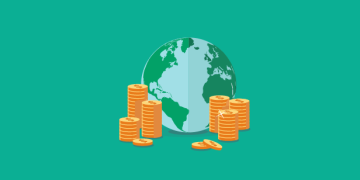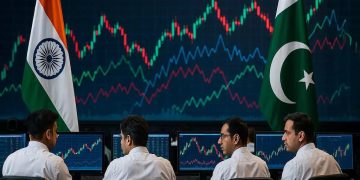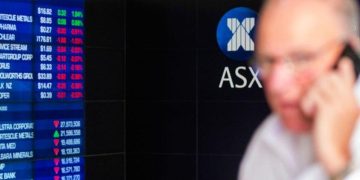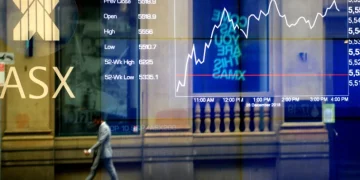As the global North slows, a new geography of growth is taking shape.
The world’s economic gravity is shifting — slowly, steadily, and unmistakably — toward the South.
By mid-2025, as advanced economies wrestle with fiscal fatigue, high interest rates, and aging populations, many emerging markets are quietly powering ahead. India is on track to become the world’s third-largest economy by 2028. Southeast Asia’s manufacturing exports are booming. Latin America’s commodity cycle has revived, and parts of Africa are experimenting with digital-led growth models.
According to the IMF’s latest World Economic Outlook, emerging and developing economies are expected to grow by 4.2% in 2025, more than double the rate of advanced economies. For the first time in decades, the “developing world” is not merely catching up — it is setting the pace.
I. A World in Divergence
The global economy has entered an era of asymmetrical growth.
The United States and the eurozone are cooling under the weight of tight monetary policy, while Japan’s long-awaited inflation has turned bittersweet, eroding household savings. In contrast, much of the Global South remains in an expansionary phase — driven by demographics, domestic consumption, and structural reform.
This divergence is not accidental.
It reflects a fundamental rebalancing of economic potential, accelerated by three major forces:
- The reconfiguration of global supply chains;
- The diffusion of digital technology; and
- The political determination among emerging nations to avoid dependency on Western demand.
The result is a multipolar economy — not one dominated by Washington, Brussels, or Beijing, but one increasingly defined by regional ecosystems of trade, capital, and innovation.
II. India: The Reluctant Superpower Steps Forward
If there is a single emblem of this shift, it is India.
For years, economists described India as “the next China.” In 2025, it has finally begun to live up to that billing — but on its own terms.
India’s GDP is projected to grow 6.8% this year, outpacing every major economy.
Unlike China’s export-driven model, India’s expansion is fueled primarily by domestic demand, digital infrastructure, and a wave of manufacturing reshoring. Global firms from Apple to Tesla have quietly shifted portions of their supply chains to India, drawn by political stability, cost competitiveness, and a government eager to court investment.
The country’s digital transformation has been nothing short of radical.
The “India Stack” — a unified digital identity, payment, and data platform — has turned the population into a connected economic force. Over 400 million Indians now use digital payment systems monthly, generating an ecosystem where micro-entrepreneurs and consumers coexist in real time.
But the real story lies in India’s industrial policy.
Through initiatives like “Make in India” and Production-Linked Incentives (PLIs), the government is attempting to replicate East Asia’s industrial miracle. Sectors like semiconductors, pharmaceuticals, and electric vehicles are seeing surges in both domestic and foreign investment.
The challenge, however, is execution: bureaucratic friction, infrastructure bottlenecks, and uneven education quality still constrain productivity.
Still, as global investors sour on China’s opaque policymaking and geopolitical risk, India’s messy democracy suddenly looks like a safer long-term bet. It may not yet be the new China — but it is becoming the new indispensable.
III. Southeast Asia: The Quiet Beneficiary of Decoupling
While India commands the headlines, Southeast Asia is quietly winning the supply-chain lottery.
The region — led by Vietnam, Indonesia, Malaysia, and Thailand — has become the world’s factory-in-waiting as multinational firms diversify production away from China.
Vietnam’s manufacturing exports have more than doubled since 2019, driven by electronics, textiles, and machinery. Samsung now produces half its smartphones there. Apple’s suppliers are expanding operations in Bac Ninh and Ho Chi Minh City.
Indonesia, meanwhile, has positioned itself as the global hub for green metals — nickel, cobalt, and copper — crucial for batteries and renewable energy. Its “downstreaming” policy bans raw ore exports and compels foreign investors to build processing plants locally. This bold experiment in resource nationalism has drawn both praise and skepticism, but it underscores a key theme of the new South: economic sovereignty over mere participation.
Beyond manufacturing, the region’s digital economy is thriving.
According to Google’s e-Conomy SEA 2025 report, Southeast Asia’s internet economy is set to surpass US$330 billion by 2025, fueled by e-commerce, fintech, and logistics innovation.
In Jakarta, digital banks are reshaping access to finance. In Singapore, startups are pioneering AI-driven supply-chain analytics.
The bloc’s main weakness remains political fragmentation. ASEAN’s consensus model makes deep integration difficult. Yet the region’s resilience — born of diversification and pragmatism — may be its greatest strength in an age of geopolitical rivalry.
IV. Latin America: Between Commodities and Complexity
Far from Asia, Latin America is also enjoying an economic renaissance — though a precarious one.
After a decade of stagnation, growth across the region has rebounded to around 2.5%, led by Brazil and Mexico. Rising global demand for energy, minerals, and food has revived commodity exports, while nearshoring trends have given Mexico an unexpected manufacturing boost.
Mexico is now the largest trading partner of the United States, surpassing China in 2024.
Automotive and electronics firms are relocating production south of the border to hedge against tariffs and logistical risk. The Mexican peso, once volatile, has become one of the world’s most stable emerging-market currencies — a symbol of newfound investor confidence.
Brazil, by contrast, is embracing green industrialization.
Under President Luiz Inácio Lula da Silva, the government has launched major public-private initiatives in biofuels, wind energy, and low-carbon agriculture. The country’s natural resources and vast renewable capacity give it a potential edge in the global decarbonization race.
Yet structural problems persist.
Latin America’s growth is hampered by weak institutions, political volatility, and chronic inequality. In Argentina and Chile, fiscal crises and social unrest continue to cycle every few years. In Peru and Colombia, governance instability undermines investor trust. The region’s long-term success will depend on whether it can translate commodity wealth into technological upgrading — a challenge it has failed repeatedly to meet.

V. Africa: The Continent of Strategic Patience
Nowhere are the stakes of global rebalancing higher than in Africa.
By 2050, one in four people on Earth will be African. Yet the continent still accounts for less than 3% of global trade. In 2025, that gap between demographic potential and economic weight remains both a tragedy and an opportunity.
The African Continental Free Trade Area (AfCFTA), launched in 2021, is beginning to bear fruit. Cross-border logistics platforms and common regulatory frameworks are slowly emerging, creating a unified market of 1.3 billion consumers. Countries like Kenya, Ghana, and Rwanda are experimenting with digital governance and fintech innovation that rivals far wealthier states.
Nigeria, despite its perennial political challenges, is seeing a tech boom centered in Lagos.
In East Africa, Kenya’s M-Pesa ecosystem has evolved into a regional fintech powerhouse, integrating payments, savings, and credit for millions previously excluded from the formal banking system.
Foreign investment is shifting as well.
China’s Belt and Road footprint in Africa is evolving from large-scale infrastructure to smaller, commercially viable projects. Meanwhile, U.S. and European initiatives — such as the G7’s Partnership for Global Infrastructure and Investment (PGII) — aim to counterbalance Chinese influence, offering an alternative model of development finance.
Yet the biggest determinant of Africa’s future may be governance.
Without stronger institutions, even abundant talent and resources risk being squandered. The continent’s story in the next decade will hinge not just on growth, but on capacity — the ability to convert energy, youth, and innovation into lasting prosperity.
VI. China and the South: From Patron to Peer
An underappreciated twist in the rise of the Global South is China’s changing role within it.
For two decades, Beijing acted as both investor and anchor — funding infrastructure, buying commodities, and exporting cheap goods. Now, facing its own slowdown, China is becoming more selective and strategic.
Its relationships with other developing countries are shifting from patronage to partnership.
Trade with Africa and Southeast Asia remains robust, but less one-sided. Chinese firms are co-investing with local governments in industrial parks, renewable energy, and technology ventures. The rhetoric of “South-South cooperation” is being redefined — less ideological, more transactional.
This evolution could reshape development itself.
Instead of a single model radiating from Beijing, the emerging world may see multiple “hybrid capitalisms”: Indian digital democracy, Southeast Asian pragmatism, Latin American resource nationalism, African fintech socialism.
The Global South is no longer a bloc; it is a mosaic of self-directed experiments in growth.
VII. The Demographic Dividend — and Its Deadline
Demographics remain the most powerful — and misunderstood — asset of the South.
While populations in Europe, Japan, and China are aging, India, Indonesia, and much of Africa are entering a demographic sweet spot. A young, urbanizing population drives consumption, innovation, and labor supply — the triad of growth.
But the dividend is not automatic.
Without quality education, productive jobs, and institutional capacity, youthful populations can become liabilities. The lesson of the Arab Spring — that frustrated youth can destabilize regimes — remains vivid.
Economists warn that the window for turning demographics into growth is only about two decades. After that, dependency ratios rise, and the cycle reverses.
Countries that invest now — in education, healthcare, and digital inclusion — will enjoy a compounding advantage. Those that delay may find themselves old before they are rich.
VIII. Technology as the Great Equalizer
If capital was the currency of the 20th century, data is the currency of the 21st — and emerging economies are learning to spend it wisely.
The diffusion of affordable connectivity, AI tools, and digital finance has lowered the barriers to productivity. In Africa, mobile money replaces banks. In India, digital IDs replace bureaucracy. In Southeast Asia, cloud platforms replace physical infrastructure.
This is development without permission — a bottom-up revolution where states and startups collaborate, sometimes uneasily, to fill institutional gaps.
The World Bank estimates that digital public infrastructure (DPI) could raise GDP by up to 5% in emerging economies within a decade if properly scaled.
Yet technology also brings new vulnerabilities: cybersecurity threats, data monopolies, and algorithmic inequality. The South’s challenge is not just adoption, but autonomy — ensuring that digital progress does not become another form of dependency on foreign platforms.
IX. The Fragile Foundations of Optimism
For all the enthusiasm surrounding emerging markets, optimism must be tempered with realism.
Inflation remains elevated in many countries; currency depreciation and capital flight are constant risks. External shocks — from geopolitical conflict to climate disasters — could easily derail fragile recoveries.
Moreover, the climate transition will test every emerging economy. Many are both victims and contributors to global emissions. Adapting to extreme weather, while transitioning away from fossil fuels, requires resources few can afford. The promise of “green growth” will depend on whether the global financial system finally rewards sustainability rather than short-term stability.
X. A New Economic Geography
Despite these challenges, the South’s rise marks the beginning of a profound transformation in global order.
The post-war architecture of trade and finance — built around the Bretton Woods institutions and the dominance of the dollar — is being re-negotiated from below.
South-South trade now accounts for over one-third of global exports, compared to less than 10% in 1990. Regional financial institutions, from the New Development Bank (BRICS Bank) to the Asian Infrastructure Investment Bank, are gradually complementing — if not replacing — Western lenders.
This is not the end of globalization, but its recalibration.
Where once goods and capital flowed northward, now ideas and innovation circulate multidirectionally. The world is becoming a network, not a hierarchy.
XI. Conclusion: The South’s Decisive Decade
The story of 2025 is not simply one of slowdown in the North, but of awakening in the South.
Emerging economies are no longer passengers in the global system — they are co-pilots, charting their own routes through uncertainty.
The next decade will determine whether this momentum solidifies into sustained leadership.
If the South can manage debt responsibly, invest in human capital, and harness technology inclusively, it could redefine global growth for a generation.
If not, today’s promise could dissolve into tomorrow’s disappointment — another false dawn in the long history of uneven development.
For now, however, one thing is clear:
The center of gravity in the world economy is moving — not abruptly, but irrevocably — toward the South.
And this time, it might just stay there.
































